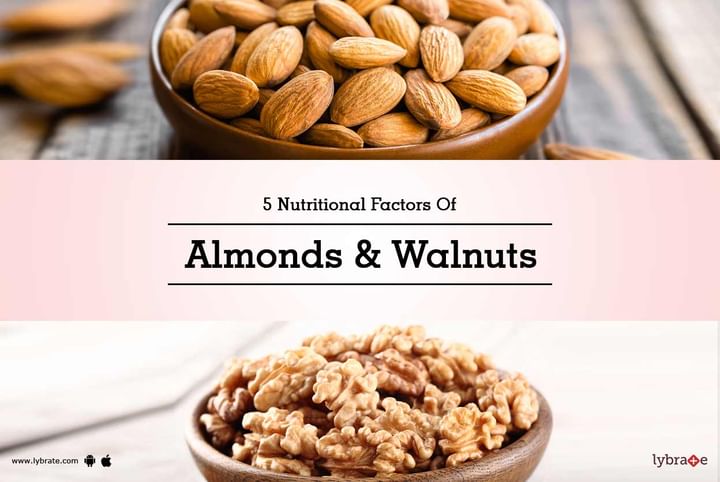Get the App
For Doctors
Login/Sign-up
Last Updated: Oct 23, 2019
BookMark
Report
5 Nutritional Factors Of Almonds & Walnuts
Whenever you peruse through snack options in a store, looking for a fulfilling yet healthy option often turns out to be really challenging. This is where you might consider nuts, such as almonds or walnuts. They are healthy snacking options with rich reserves of protein, fibre, and energy.
However, even in the choice between almonds and walnuts, there are certain things which need to be kept in mind.
- Energy content: Almonds contain 14 grams worth of fat, and 164 calories whereas walnuts contain approximately 18 grams of fat but give 185 calories. Thus, we find that walnuts contain a slightly higher amount of fat than almonds, but provide more energy in the form of calories.
- Protein content: Almonds and walnuts are both protein powerhouses - containing 13% and 9% of protein content respectively. Thus, both these nuts are great sources of protein.
- Mineral content: Both almonds and walnuts are rich in various kinds of minerals. When it comes to Iron, which is essential for muscle health and blood formation, both nuts contain very similar amounts (approx 5%). Almonds pack 19% magnesium - essential for strong bones, compared to the 11% in walnuts. Walnuts, however, have very high amounts of copper (50%) and manganese (54%) which prove to be useful in reducing symptoms of PMS as compared to almonds.
- Fibre content: Fiber,which plays a vital role in completing the process of digestion, is another component that these nuts pack healthy amounts of. Almonds contain 16% fiber whereas walnuts have 8%.
- Vitamin content: While walnuts contain 12% Vitamin B6, compared to the 3% in almonds, the real point of difference between these two highly healthy nuts is in their content of Vitamin E - essential for healthy skin and eyes. Almonds contain almost 48% of it, whereas walnuts contain only about 2% of the same.
Thus, we get a fair idea about the high nutritional content for both these nuts. They are both essential, especially if they can be incorporated into our diets in the correct proportions. If you wish to discuss about any specific problem, you can consult a dietitian-nutritionist.



+1.svg)
